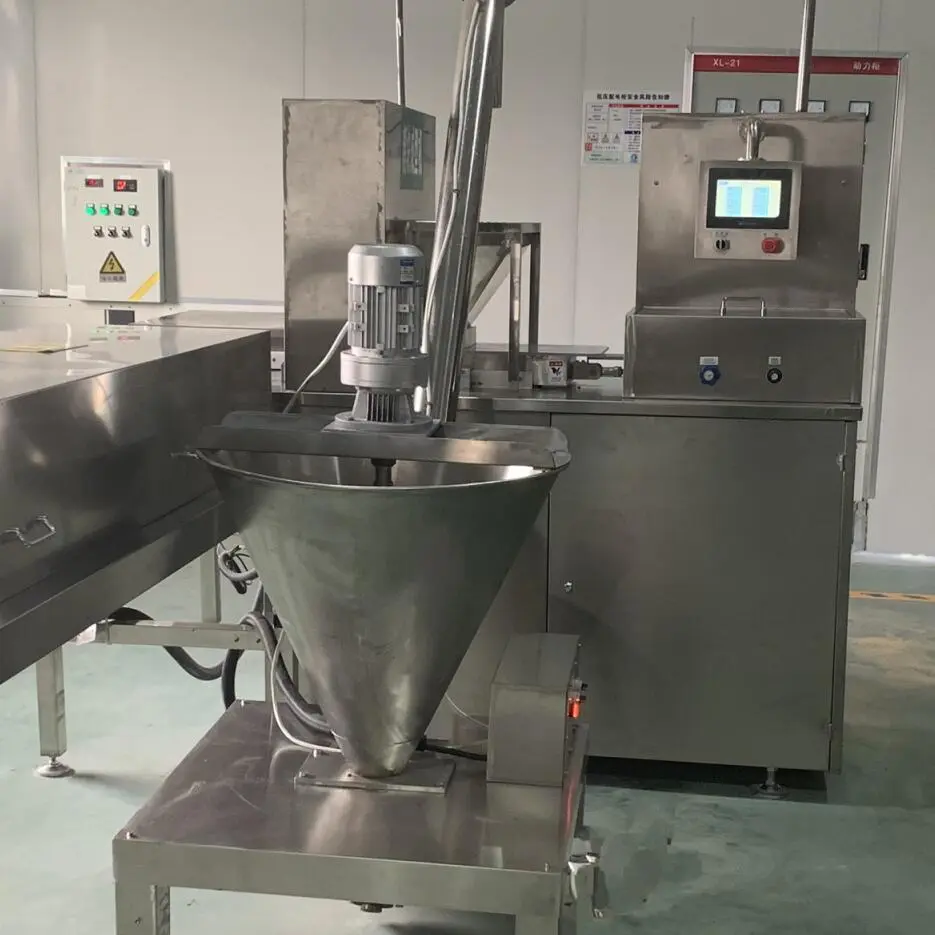Sugar cubes might look simple, but the machinery behind them is sophisticated. The process is a precise blend of science, engineering, and practical operation. A well-chosen machine means better cubes, higher throughput, and smoother operations for your production line.
.jpg)
How Does a Cube Sugar Making Machine Work?
At its core, cube sugar machines perform four essential steps:
| Step | Description |
|---|---|
| 1. Pre-moistening | Granulated sugar (2–3% moisture) is gently moistened to help binding. |
| 2. Compression | Sugar is pressed into molds under precise pressure. |
| 3. Drying | Infrared or hot-air tunnels remove moisture and finalize cube density. |
| 4. Cooling & Discharge | Cubes are cooled and released onto conveyors for packaging. |
Each stage affects cube density, shape, and dissolution rate. According to Wikipedia, modern lines produce up to 50 tons per day using one of three main methods: vibro-fill, Chambon, or Hersey drum systems .
Choosing the Right Machine: Scale, Sugar, and Automation
Production Capacity & Scale
Small-scale operations: Look at 100–200 kg/h units. These are compact and ideal for specialty or small-batch producers.
Large production lines: Choose machines that handle 1,000 kg/h or more. Efficient for high-volume packaging and export.
JumpFruits offers various models. For small-scale needs, check the Compact Cube Sugar Making Machine. For full-scale production lines, explore the Automatic Cube Sugar Production Line with integrated feeders, pressers, and packing modules.
Sugar Types & Formulations
Whether you use white granulated sugar, jaggery, panela, or brown sugar, moisture tolerance and mold design change. Stevia or high-moisture sugars require adjustable feeding systems and drying tech.
Automation & Controls
Modern machines feature PLC/HMI interfaces for real-time monitoring and adjustment. Full automation—from feeding to packing—reduces manual error and labor costs.
Food Safety & Materials
Ensure contact parts use 304 or 316 stainless steel and that the design supports clean-in-place (CIP) systems. CE or ISO certification also fosters export compliance.

Industry Insights: Trends & Patent Highlights
Patent-Based Innovation:
A patent search reveals cube forming machines emphasizing cleanability and high throughput—like rotating molds and easy-release designs.
History of Sugar Cube Manufacturing:
Sugar cube production has evolved since the vibro-fill process of the 1950s, through Chambon and Hersey systems, now powering massive automated lines .
Large-Scale Lines:
Some industrial setups now exceed capacities of 25 tons per day, complete with PLC integration, robotic packaging, vacuum sealing, and drying tunnels for high consistency
Smart tip: Before purchase, list your output needs (kg/h), sugar type, mold shapes, space constraints, and downstream processes. Match these to the features of each model, especially control system, stainless steel grade, and modularity.
A cube sugar making machine is more than a compactor—it’s a complex system requiring precise control of moisture, compression, drying, and quality. The right model transforms your production—boosting efficiency, consistency, and output.
JumpFruits offers scalable solutions. From small-scale hobbyists to industrial operations, match your production goals, sugar types, and automation needs with the right machine.
.jpg)
FAQs
Q1: What moisture level is typical for cube sugar?
Around 2–3% moisture helps cubes bind during compression, while drying reduces it below 0.5% for durability.
Q2: Can the machine handle multiple sugar types?
Yes—many lines accommodate granulated sugar, jaggery, panela, or stevia blends. Confirm mold and feeding design for each type.
Q3: What shapes can be produced?
Beyond cubes, machines can mold hearts, tablets, or branded shapes by changing mold inserts.
Q4: How customizable are cube sizes?
Standard cubes range from 6×6×6 mm to 16×16×13 mm, but many models support custom sizes.
Q5: What safety concerns exist?
Sugar dust poses explosion risks. Proper ventilation, dust control, and protective gear are essential in the plant.
Post time: Aug-26-2025
